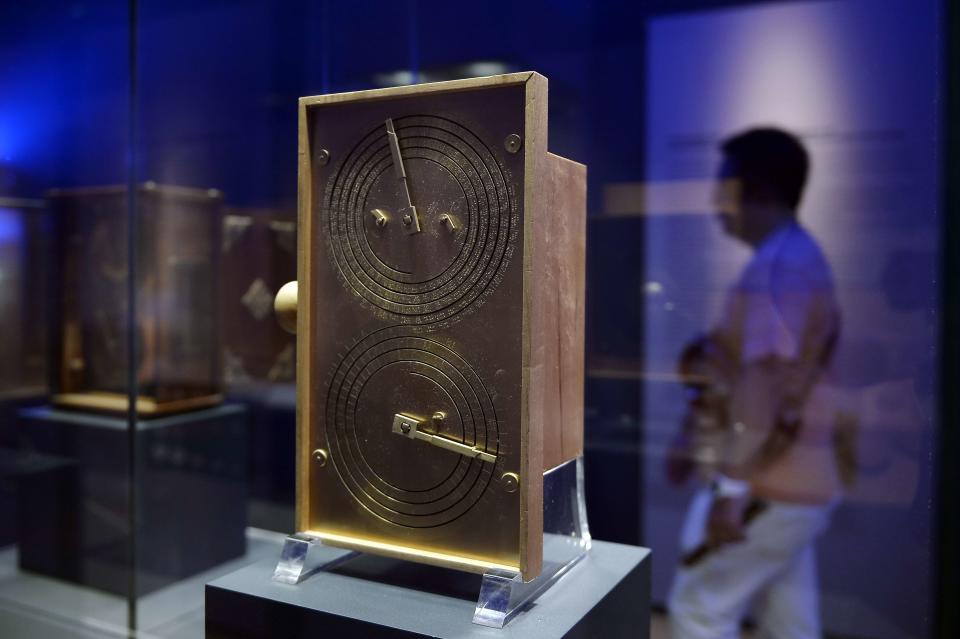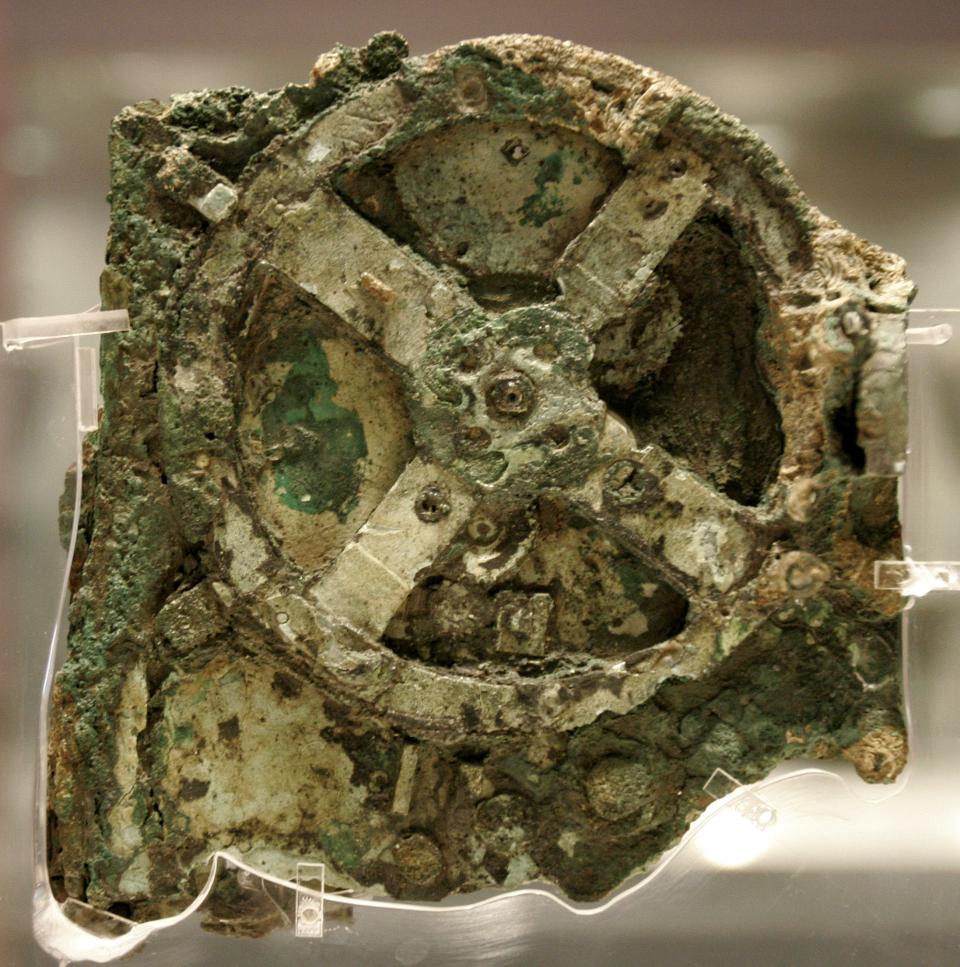Fact-checking 'Indiana Jones and the Dial of Destiny': Is the Antikythera mechanism real?
- Oops!Something went wrong.Please try again later.
- Oops!Something went wrong.Please try again later.
Harrison Ford takes his final adventure as the swashbuckling archeologist in "Indiana Jones and the Dial of Destiny," a mission to track down the titular dial that "could change the course of history," his goddaughter Helena (Phoebe Waller-Bridge) says.
In the movie (available now to buy digitally), it turns out the mysterious device known as the Antikythera mechanism can predict the location of naturally occurring fissures in time and allow time travel.
But is the Antikythera mechanism real or fiction? Is it based on a legend like the Ark of the Covenant from "Raiders of the Lost Ark"?
"All the 'Indiana Jones' movies are built on a fusion of fantasy and reality, an extrapolation of what might have been to what may be impossible," says "Dial of Destiny" director James Mangold. "And I thought the Antikythera mechanism was a great relic."
Is the 'Dial of Destiny,' aka the Antikythera mechanism, real?
The Antikythera mechanism is not only real but a "mind-blowing" artifact, says research engineer Tom Malzbender. Working for Hewlett-Packard Laboratories in 2005, Malzbender conducted high-tech photographic imaging of the device at the National Archaeological Museum in Athens, where three of the main fragments are on display.
The fragile 2,000-year-old-plus antiquity has broken into more than 80 pieces and would not survive handling, much less an Indiana Jones adventure.
"It has the consistency almost of a wafer cookie − like if you even lifted it, stuff would fall," says Malzbender. "But it's probably the most significant technological artifact of the ancient world ever found."
The relic's wild discovery is remarkably similar to the tale told in "Dial of Destiny." A sponge diver discovered an ancient shipwreck off the tiny Greek island of Antikythera in 1901. The diver was horrified by the sight of a “heap of dead naked people" on the sea floor, wrote mathematician and researcher Tony Freeth, a founding member of the Antikythera Mechanism Research Project, in a 2009 Scientific American essay.
The underwater excavation that followed revealed a treasure trove of marble statues (mistaken for real people) and artifacts that would have wowed Indiana Jones.
Ranked: Every 'Indiana Jones' movie (including 'Dial of Destiny')
A phone-book-size calcified lump recovered from the site fell apart to reveal the astonishing Antikythera mechanism, which dates to around 70 B.C. and features Greek inscriptions and bronze gear wheels.
"Gears like these should not have appeared in ancient Greece, or anywhere else in the world, until many centuries after the shipwreck," Freeth wrote. "The find generated huge controversy."
Can the Antikythera mechanism be used for time travel?

Research has shown the Antikythera mechanism was once housed in wood with a crank on the side to engage the elaborate gears, dials and pointers.
"The mechanism calculated the dates of lunar and solar eclipses, modeled the moon’s subtle apparent motions through the sky ... and kept track of the dates of events of social significance, such as the Olympic Games," Freeth wrote. "Nothing of comparable technological sophistication is known anywhere in the world for at least a millennium afterward."
Alexander Jones, director at the Institute for the Study of the Ancient World at New York University, says ancient users could turn the crank to see the positions of the sun, moon and known planets in the future − as well as the past by turning the crank in the other direction. But linking the Antikythera mechanism to time travel is pure "Dial of Destiny" fiction.
The Antikythera mechanism "has been romanticized into this time-travel device here, which it was not," says Jones.

Did Archimedes create the Antikythera mechanism?
"Dial of Destiny" purports that famed Greek mathematician and inventor Archimedes created the Antikythera mechanism. But Jones, along with other experts, is "skeptical" that Archimedes was the sole creator, if he even worked on the mechanism. There is no conclusive proof pointing to any creator.
"We just don't know," says Jones. "Archimedes is one of the Greek world's top mathematical and scientific minds who had a founding role with the gear technology seen (in the Antikythera mechanism). There are smart people who believe he's behind it. I don't think so."
Archimedes played a legendary role in defending his Hellenic hometown from a Roman invasion during the Siege of Syracuse around 213 B.C. He gets prime Hollywood screen time in "Dial of Destiny," played by actor Nasser Memarzia in the film's depiction of a Roman naval attack.
Is Harrison Ford really retiring Indy? He might role play at home: 'Not your business!'
Historians and scientists have argued whether the war machines displayed onscreen, such as the ship-destroying "Archimedes' Claw," actually existed or were embellished through time.
Archimedes' Death Ray, which supposedly needed only mirrors and sunlight to set Roman ships ablaze, is an even more contested invention. Among the many studies debunking the possibility of this sci-fi-worthy weapon, Discovery Channel's "Mythbusters" devoted three episodes to the death ray − concluding with the infeasible "busted" tag each time.
"But Archimedes was famous for being the one man keeping the Roman navy off for so long," says Jones. "Not forever. The Romans eventually got in and he was killed in the city's capture of Syracuse."
This article originally appeared on USA TODAY: 'Indiana Jones' fact check: Is the 'Dial of Destiny' real history?

